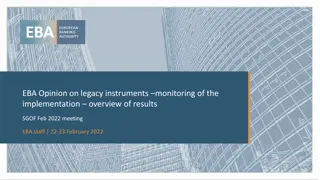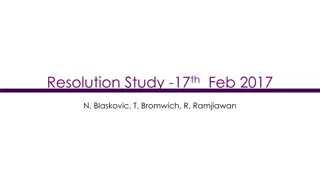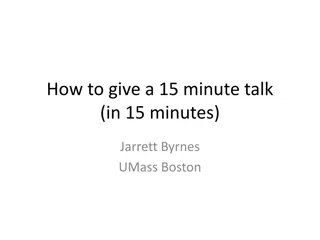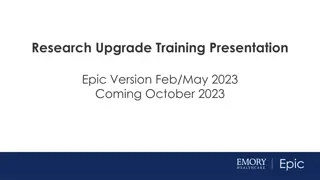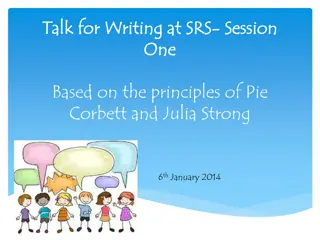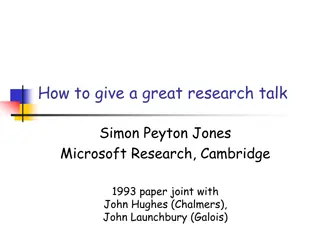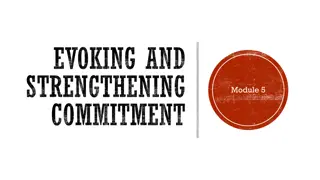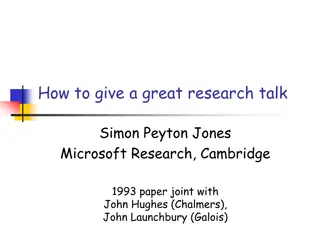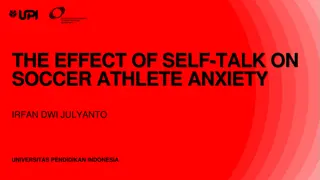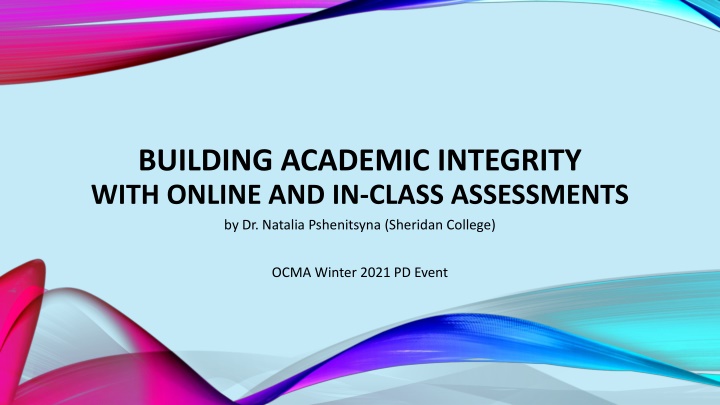
Building Academic Integrity in Assessments: Tips and Strategies
Explore essential principles and innovative ideas for fostering academic integrity in online and in-class assessments. Learn about academic integrity values, shifting responsibilities to students, key principles to keep in mind, counter-intuitive ideas, and practical tips for project and in-person assessments.
Download Presentation

Please find below an Image/Link to download the presentation.
The content on the website is provided AS IS for your information and personal use only. It may not be sold, licensed, or shared on other websites without obtaining consent from the author. If you encounter any issues during the download, it is possible that the publisher has removed the file from their server.
You are allowed to download the files provided on this website for personal or commercial use, subject to the condition that they are used lawfully. All files are the property of their respective owners.
The content on the website is provided AS IS for your information and personal use only. It may not be sold, licensed, or shared on other websites without obtaining consent from the author.
E N D
Presentation Transcript
BUILDING ACADEMIC INTEGRITY WITH ONLINE AND IN-CLASS ASSESSMENTS by Dr. Natalia Pshenitsyna (Sheridan College) OCMA Winter 2021 PD Event
WHAT IS ACADEMIC INTEGRITY? Commitment to values: Honesty Trust Fairness Respect Responsibility Courage (The International Centre for Academic Integrity ICAI) A BREACH? Gaining unfair academic advantage Plagiarism; Cheating: sharing and copying; using unauthorized sources, devices or software; lying about special circumstances; changing grades, hacking Impersonation, hiring help Improper research practice Encouraging any of the above Doing something that is not allowed
SHIFTING THE RESPONSIBILITY Students are responsible for their actions It promotes independence and mutual respect It relieves pressure off professors It invalidates the excuse but others do it It is easy to explain, and to realize
PRINCIPLES TO KEEP IN MIND Being straightforward in advance Aiming to prevent, not to catch later Connecting assessments with real life goals Learning about new techniques Making it harder for cheaters, not for all Being consistent and following through
COUNTER-INTUITIVE IDEAS Poll #1 Increase difficulty and length Make it open book, permit software and devices, working in groups; use alternative assessments Share the materials yourself (notes, recordings, tests) Postpone the makeups Relax (for things you cannot control)
TIPS FOR PROJECT ASSIGNMENTS Include citation guides, library links Announce the use plagiarism detection software Variegate by student number, initials, group number Use generated data or recent real-life data Send reminders and check progress Allow draft submissions and give feedback Consider oral presentations If in groups, let them choose group mates
TIPS FOR IN-PERSON ASSESSMENTS Create multiple versions, change between uses Invite invigilators Tell students there are versions, but hide the labels Tell students all the rules Adjust difficulty and length Split in parts (e.g. part 1 on a laptop, part 2 on paper) Make a seating arrangement
TIPS FOR ONLINE ASSESSMENTS Randomize, shuffle, create pools, one question per page Use various types of questions (true-false, multiple choice, multi-select, algorithmic, short answer, essay) Build from low-stakes to high-stakes assessments Adjust difficulty and length, synchronous timing Consider lockdown, monitoring Split in parts, e.g. part 1 not locked (with Excel or hand- written solutions), part 2 locked (concepts) Adjust feedback view settings Poll #2
EXAMPLES OF SHORT QUESTIONS Multi-select: Which of the following variables are of the ratio level: Wind speed Temperature Cloudiness Rainfall Sunset time Humidity Snowfall risk Sky colour Basic MCQ: What is the level of measurement for the wind speed: oNominal oOrdinal oInterval oRatio Better MCQ: Which of the following variables is of the ratio level: oWind speed oTemperature oCloudiness oSky colour Open-ended: Give examples of weather related variables for each level of measurement. Explain.
ALGORITHMIC QUESTIONS BrightSpace(D2L): Blackboard: Moodle and Sakai: Canvas: Arithmeticquestion Calculated formula Calculated question Formula question Most publishers systems have them. +: Randomized, with tolerance, auto-graded -: Limited functions, mostly numeric, final answer
EXAMPLES OF ONLINE TESTS Question 1 versions: Download and save the following file restau01101.xlsx Download and save the following file restau01001.xlsx Download and save the following file restau01011.xlsx From this file, give an example of ordinal level data. Construct a histogram for the Bill amount ($). Construct a histogram for the Wait time (minutes). Construct a histogram for the Floor area (m2). Question 2 versions: Find the quartiles; interpret them. Find the mean, median, mode; interpret them. Find the range, st. dev., coeff. of var.; interpret them. Question 3 versions:
RANDOMIZING PAPER TESTS Mailings tab in Word Versions in Excel: A1M Store 59.78 18.53 Walmart 62.13 19.88 HomeDepot snow shovel 64.55 21.30 Lowe's Paper tests: A1S Product landscaping rake garden gnome
RANDOMIZING DATA FILES Name Year Built Years Since Built =2020-B3 =@INDIRECT("z"& RANDBETWEEN(1,7)) =2020-B4 =@INDIRECT("z"& RANDBETWEEN(1,7)) =2020-B5 =@INDIRECT("z"& RANDBETWEEN(1,7)) Food quality Service(minutes) R001 =RANDBETWEEN( 1981,2010) R002 =RANDBETWEEN( 1981,2010) R003 =RANDBETWEEN( 1981,2010) =ABS(ROUND(75+ 10*T.INV(RAND(),5),1)) =ABS(ROUND(75+ 10*T.INV(RAND(),5),1)) =ABS(ROUND(75 +10*T.INV(RAND(),5),1)) Solutions:
References: International Center for Academic Integrity: https://www.academicintegrity.org/ Sheridan College Academic Integrity Resource Guide Lang, James M. Cheating lessons : learning from academic dishonesty THANK YOU FOR YOUR ATTENTION!


